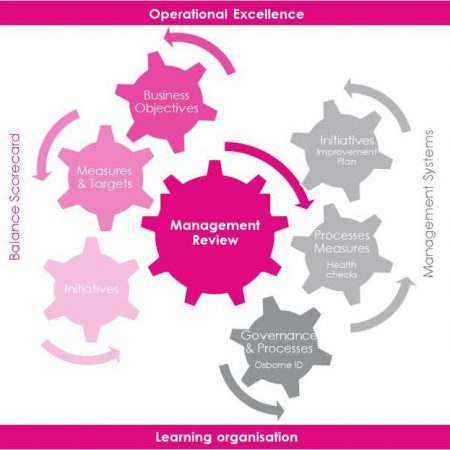How to achieve an effective management review
Angelique Macrez, Group Performance Improvement Manager at Osborne, explains the benefits of the management review.
The management review, which must take place at planned intervals, allows senior management to review and ensure that the quality management system remains suitable, adequate, effective and aligned with the strategic direction of the business. It has often been perceived as a box-ticking exercise to satisfy the requirement of the ISO 9001:2015 standard.
Convincing the board to allocate time on their agenda to discuss this matter is sometimes a tough mission for quality professionals. Nevertheless, ISO 9001:2015 has been helping to change the face of quality within organisations.
At UK-based construction company Osborne, after achieving the transition to ISO 9001:2015, the company improved its management review across the business by introducing a Management Review Maturity Matrix and Learning Organisation Score. This was well received by the operations board team as it fitted well with the company’s organisational objectives.
By sharing this initiative, Osborne hopes to provide CQI members with some new perspectives on how to meet the ISO management review requirement.
Management Review Maturity Matrix
Recently, the Osborne board has brought the Management Review Maturity Matrix to the top of their agenda. The matrix is an A3 document that lists the inputs and outputs required by ISO 9001:2015, and these are assessed based on a four-level maturity grid. The matrix helps Osborne to measure its compliance, determine areas for improvement, and also to capture best practice and benchmark across the business.
With the development of this matrix, Osborne aimed to demonstrate in a different and engaging way how the management review was intended to provide companies with a more structured approach to:
- support the business strategy and pursue the company’s objective of continuing to become a world-class learning organisation
- drive improvement across the organisation that would benefit its people, supply chain and customers
I worked closely with Rennie Chadwick, Osborne’s Chief Operating Officer, to create the matrix. The business improvement team led the assessment in their business and the data gathered was then analysed to identify good practice, define common strengths and areas for improvement. These were communicated to Osborne’s Operations board.
The matrix allows Osborne to assess its compliance and maturity with regards to the required management review inputs and outputs. There are guidelines that detail best practices to refer to during the assessment.
The first column asks you to assess and confirm that effective mechanisms are in place to collect data for each required input/output and ensure efficient trend analysis. From there, we highlighted which mechanisms were missing or to be improved for more efficiency.
The second column focuses more on the results aspect. We assess our capability to drive effective improvement across our business and develop our employees’ skills from trend analysis and lessons learned.
The third column sets the level of maturity for each input/output based on responses provided within the first two columns and determines the learning organisation score.
The learning organisation score provides Osborne with one figure that everyone can remember easily and follow up on a regular basis. This score defines how Osborne is doing and should increase once we have completed our improvement plan. It will help measure the efficiency of our improvement plan.
Pros and cons of the management review
The management review maturity matrix has been carried out within three of Osborne’s businesses and has allowed the organisation to identify good practice to share or replicate across the company. In addition to this, the matrix has identified common areas for improvement.
This matrix helps in guaranteeing that Osborne’s decision-making process is based on more factual information while developing a business plan and sustainability strategy.
It also makes it easier for Osborne to prioritise its improvement initiatives and focus on where it will be the most beneficial for its employees, supply chain and clients.
“This approach has completely changed the way that our board team engage with our management system. It is increasingly ’built in’ to the way that we review performance and decide where and why to focus our efforts to enable improvement,” said Rennie Chadwick, Chief Operating Officer at Osborne.
The next challenge for Osborne would be to be able to compare the company’s score to other organisations and against different sectors to create a benchmark.

